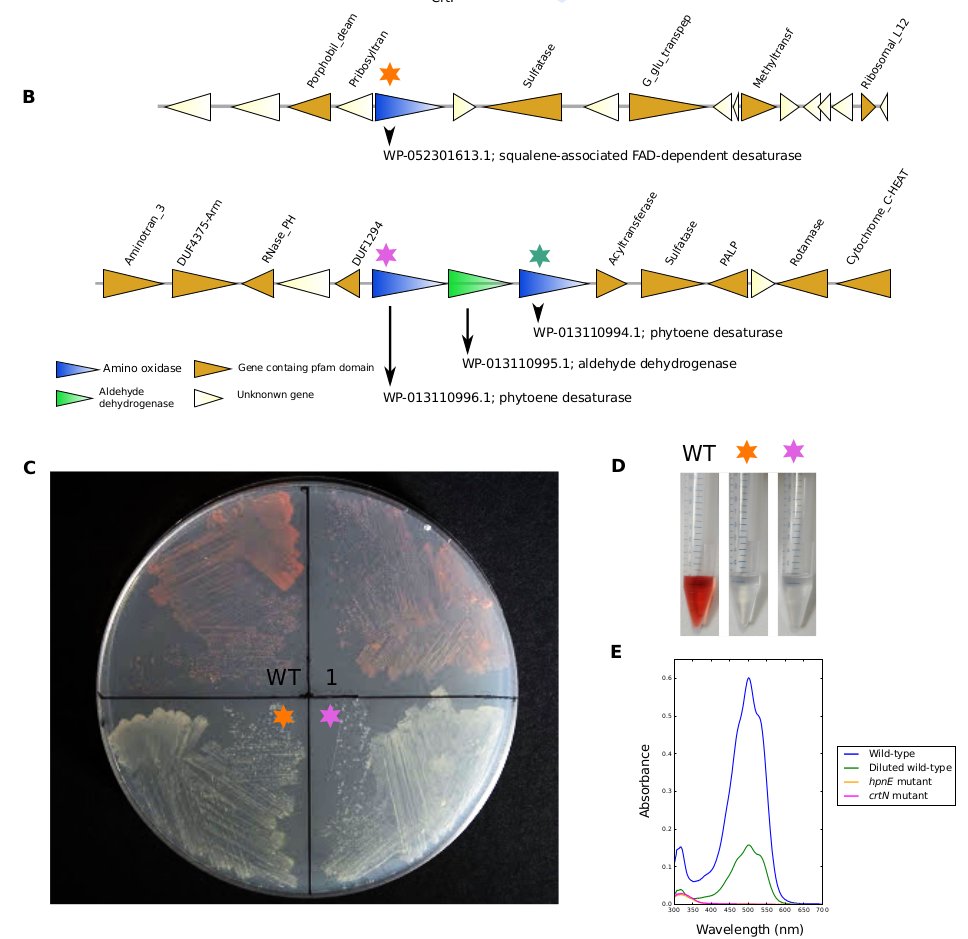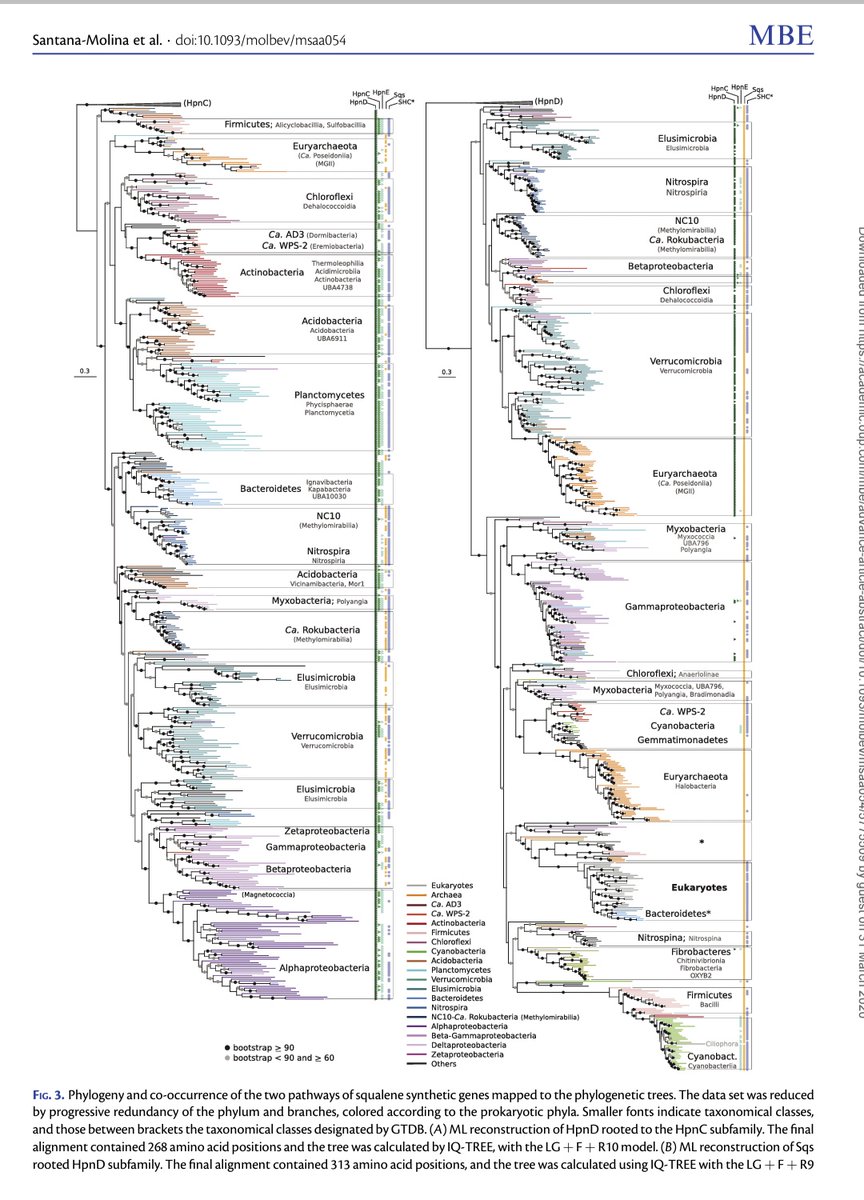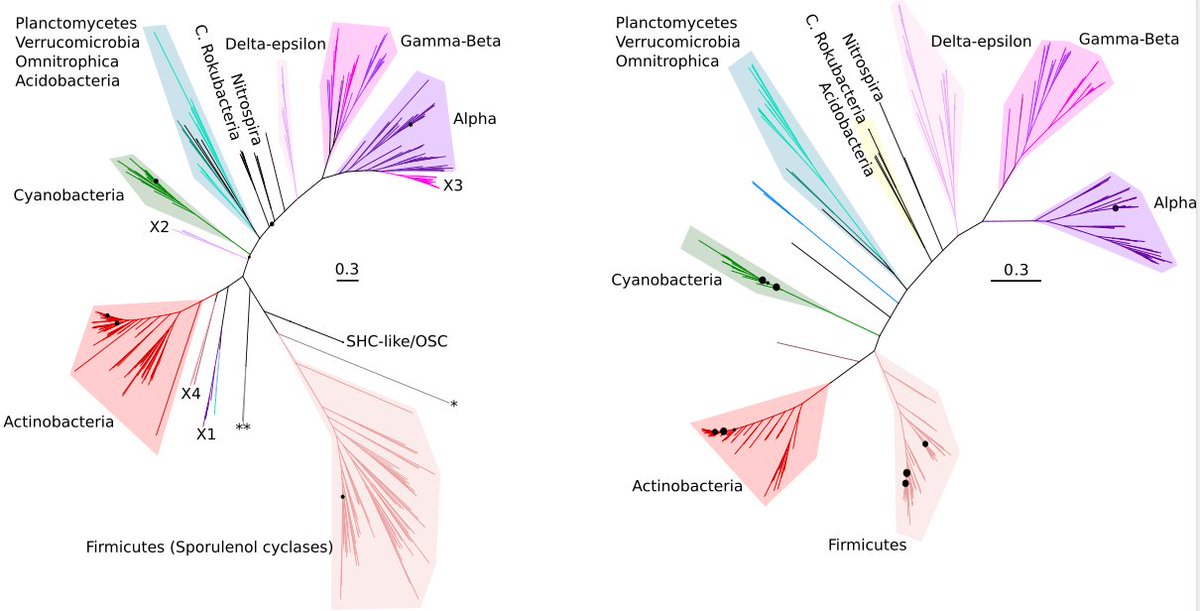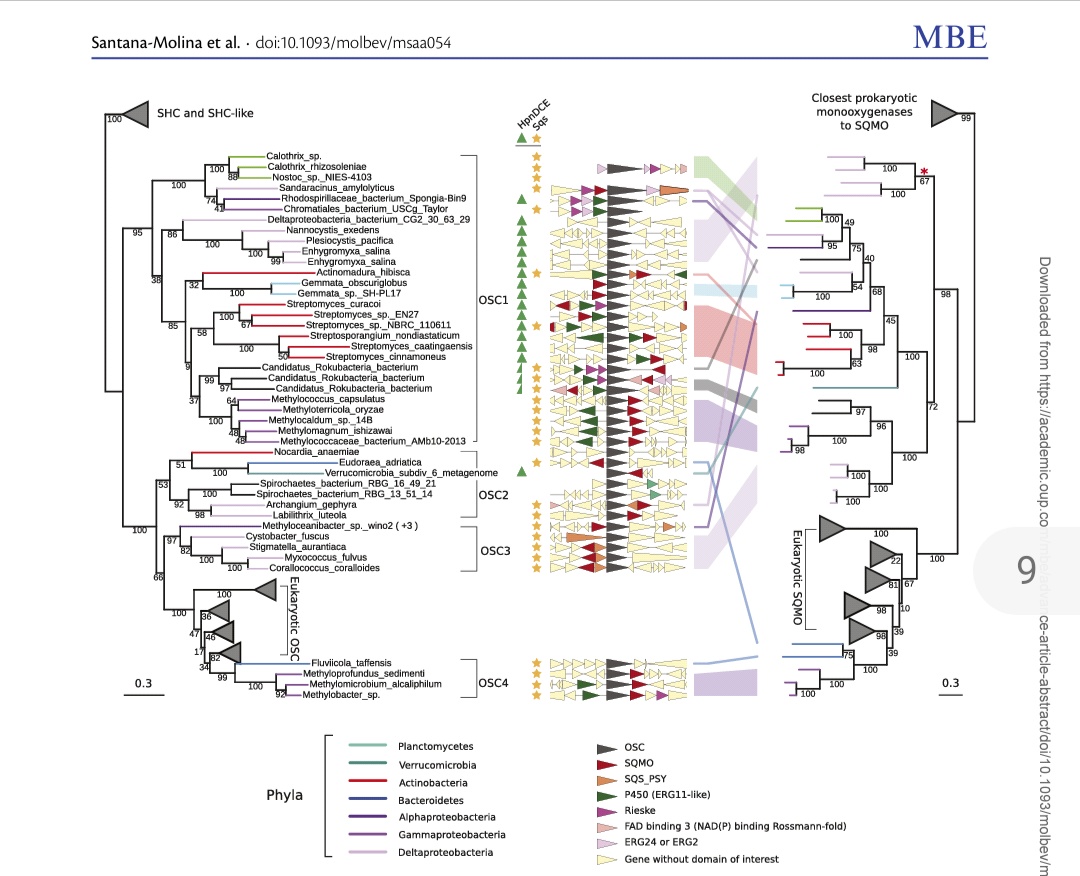& #39;Origin and evolution of polycyclic triterpenes& #39; is finally out in @MolBioEvol! Very proud of my first paper and grateful to have learnt so many things thanks to @pvcbacteria, @amrojasmendoza @ElenaTFA. Great effort and teamwork!
https://doi.org/10.1093/molbev/msaa054
(Below">https://doi.org/10.1093/m... spoilers)
https://doi.org/10.1093/molbev/msaa054
(Below">https://doi.org/10.1093/m... spoilers)
Polycyclic triterpenes, like hopanoids and sterols, are important terpenes found in bacteria and most eukaryotes respectively. Both are produced by the cyclisation of squalene produced by HpnCDE or Sqs enzymes, which are homologous to those involved in carotenoid biosynthesis
For the first time, we unveil the evo- history of squalene biosynthesis. Spoiler: HpnCDE and Sqs enzymes presume to have bacterial origin. From functional perspective, we suggest that HpnCDE constitute an ancestral and versatile pathway maybe closely related with carot synthesis
We provide a promising experimental analysis in #Planctomycetes that could shed light on novel pathways related with carotenoid biosynthesis involving the HpnCDE enzymes https://abs.twimg.com/emoji/v2/... draggable="false" alt="🤞" title="Crossed fingers" aria-label="Emoji: Crossed fingers">
https://abs.twimg.com/emoji/v2/... draggable="false" alt="🤞" title="Crossed fingers" aria-label="Emoji: Crossed fingers">
Sqs is found in the 3 domains and seems to have been more prone to LGT and possibly more focused on squalene production. We finally suggest that the emergence of Sqs could have uncoupled the biosynthesis of carotenoid and polycyclic triterpene in some organism
The evo- history of squalene biosynthesis also provides a interesting story regarding the co-occurrence of both squalene pathways in some prokaryotic genomes. This story also can show how nature works when two different molecular systems that are functionally redundant, coincide
Triterpene cyclases are those responsabile for the cyclisation of (2,3epoxy*)squalene into hopanoids (SHC) or sterols (OSC*). Shc and Osc are pretty homologous. The question here is, how did eukaryotic ancestors get the OSC? Spoiler: triterpene cyclases are absent in Archaea.
SHC phylogeny displays a striking congruency with a bacterial species tree from which I learnt that this kind of things must be interpreted cautiously. Otherwise, we suggest SHC was ancestral in some bacteria phyla, showing the relevance of this molecule during the evolution
For the sterol side, we discuss extensively about the possible meanings about why some bacteria have sterol genes. This is a long and important debate in the field due to the value of the sterol biosynthesis during the origin of eukaryotes
Phylogenetic reconstructions combined with genomic contexts show that some bacteria have gene clusters involved in sterol metabolism and with doubtful eukaryotic origin. One important question here was, why some bacteria have retained the ability to produce sterol?
We recently published a beatiful paper by @ElenaTFA, @SeanStettner et al. in collaboration with #NaomiWard lab, demonstrating the essentiallity of sterol synth. in G. obscuriglobus, providing a breach of uniqueness for the sterol requirement in eukaryotes
https://rdcu.be/b2EDu ">https://rdcu.be/b2EDu&quo...
https://rdcu.be/b2EDu ">https://rdcu.be/b2EDu&quo...
Having the big picture of the polyciclic triterpene evolution and the current viene of tree of life, eukaryotic sterol genes should have assembled from bacterial contributions during the #eukaryogenesis. A familiar story to other membrane component in the origin of eukaryotes.
I& #39;m glad if you enjoyed reading this story. Again, thanks to all people that contribute to this work. Specially, Damien Devos ( @pvcbacteria) for ALL kind of support and motivations and Ana M. Rojas ( @amrojasmendoza) also for teaching me so many interesting things. @CABD_UPO_CSIC

 Read on Twitter
Read on Twitter " title="We provide a promising experimental analysis in #Planctomycetes that could shed light on novel pathways related with carotenoid biosynthesis involving the HpnCDE enzymeshttps://abs.twimg.com/emoji/v2/... draggable="false" alt="🤞" title="Crossed fingers" aria-label="Emoji: Crossed fingers">" class="img-responsive" style="max-width:100%;"/>
" title="We provide a promising experimental analysis in #Planctomycetes that could shed light on novel pathways related with carotenoid biosynthesis involving the HpnCDE enzymeshttps://abs.twimg.com/emoji/v2/... draggable="false" alt="🤞" title="Crossed fingers" aria-label="Emoji: Crossed fingers">" class="img-responsive" style="max-width:100%;"/>






